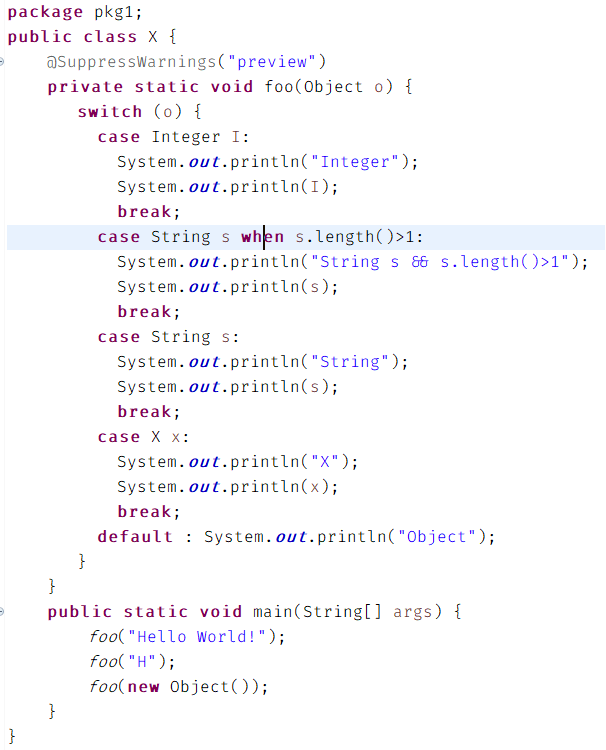The Java ecosystem is in a constant state of evolution, buzzing with technical advancements, new language features, and important discussions around its stewardship. For developers, staying current isn’t just about learning new syntax; it’s about understanding the fundamental shifts that impact performance, security, and development practices. Recent conversations about Java SE licensing have prompted many organizations to look closer at their Java strategy, but this scrutiny reveals a landscape that is more vibrant and diverse than ever before. This article delves into the most significant Java SE news, exploring the thriving OpenJDK ecosystem, groundbreaking features in recent Long-Term Support (LTS) releases, and the future of concurrency with Project Loom.
The Modern JDK Landscape: Choice and Power with OpenJDK
At the heart of modern Java is OpenJDK, the open-source reference implementation of the Java SE Platform. While Oracle Java is one well-known distribution built from this source, the ecosystem is rich with alternatives, each offering unique benefits in terms of licensing, support, and performance tuning. Understanding this distinction is the first step for any team building a modern Java strategy.
Understanding OpenJDK Distributions
When you download a “JDK,” you are downloading a specific build of the OpenJDK source code, packaged with an installer and potentially some additional tools or performance enhancements. The licensing and support models depend entirely on the vendor providing the build. This diversity is a major strength of the Java ecosystem news, offering unparalleled choice.
- Adoptium Temurin: A community-driven project backed by the Eclipse Foundation, providing rock-solid, enterprise-ready, and TCK-verified builds of OpenJDK. It’s completely free to use under the GPLv2 with Classpath Exception license.
- Amazon Corretto: Amazon’s no-cost, production-ready distribution of OpenJDK. Amazon uses Corretto internally for its own services, ensuring it’s well-tested at scale. It comes with long-term support, including performance enhancements and security fixes.
- Azul Zulu: A popular choice in the enterprise space, Azul offers certified, TCK-tested builds of OpenJDK. They provide free community editions as well as commercial options with extensive support plans and specialized JVMs like their high-performance Zing.
- BellSoft Liberica JDK: Another TCK-verified OpenJDK build with a focus on a wide range of supported platforms, including embedded systems. They offer free standard builds and commercially supported versions.
The key takeaway is that the innovation happening in Java SE is available to everyone through OpenJDK. The choice of distribution is a business and operational decision, not a technical limitation. This robust OpenJDK news ensures that the future of Java remains open and competitive.
Embracing the New LTS: Game-Changing Features in Java 17 and 21
Sticking with older versions like Java 8 or Java 11 means missing out on a decade of language refinement, performance improvements, and security enhancements. The latest LTS releases, Java 17 and Java 21, introduce features that fundamentally improve code clarity and maintainability. Let’s explore some of the most impactful ones.
Sealed Classes and Interfaces (Java 17)

Sealed classes and interfaces give developers fine-grained control over their class hierarchies. By using the sealed modifier, you can explicitly declare which classes or interfaces are permitted to extend or implement them. This is incredibly useful for modeling domains where you have a fixed set of possibilities, such as the result of an API call or a state machine. It moves domain knowledge from documentation into the compiler itself, preventing unintended implementations and enabling more powerful pattern matching.
// The interface explicitly permits only three implementing classes.
public sealed interface PaymentResult
permits PaymentSuccess, PaymentFailure, PaymentPending {
String getTransactionId();
}
// Implementations must be final, sealed, or non-sealed.
public final class PaymentSuccess implements PaymentResult {
private final String transactionId;
private final double amount;
public PaymentSuccess(String transactionId, double amount) {
this.transactionId = transactionId;
this.amount = amount;
}
@Override
public String getTransactionId() { return transactionId; }
public double getAmount() { return amount; }
}
public final class PaymentFailure implements PaymentResult {
private final String transactionId;
private final String reason;
public PaymentFailure(String transactionId, String reason) {
this.transactionId = transactionId;
this.reason = reason;
}
@Override
public String getTransactionId() { return transactionId; }
public String getReason() { return reason; }
}
public final class PaymentPending implements PaymentResult {
private final String transactionId;
public PaymentPending(String transactionId) {
this.transactionId = transactionId;
}
@Override
public String getTransactionId() { return transactionId; }
}Pattern Matching for `switch` and Record Patterns (Java 21)
Java 21 supercharges the switch statement, transforming it from a simple control flow structure into a powerful data-interrogation tool. You can now switch directly on the type of an object, eliminating cumbersome chains of if-else-if (instanceof ...) blocks. When combined with Record Patterns, you can deconstruct objects and bind their components to variables directly within the case label. This leads to dramatically more readable and less error-prone code.
public class PaymentProcessor {
// A record to represent a point, for another example
public record Point(int x, int y) {}
// Using the sealed interface from the previous example
public String processPayment(PaymentResult result) {
return switch (result) {
// Pattern matching on type and deconstructing the object in one go!
case PaymentSuccess s ->
String.format("SUCCESS: Processed $%.2f for tx: %s", s.getAmount(), s.getTransactionId());
case PaymentFailure f ->
String.format("FAILURE: Tx %s failed. Reason: %s", f.getTransactionId(), f.getReason());
case PaymentPending p ->
String.format("PENDING: Tx %s is awaiting confirmation.", p.getTransactionId());
// The compiler knows all permitted types are handled, so no default is needed!
};
}
public void handleObject(Object obj) {
switch (obj) {
case String s -> System.out.println("It's a string: " + s);
// Record pattern deconstructs the Point into its x and y components
case Point(int x, int y) -> System.out.println("It's a point at x=" + x + ", y=" + y);
case null -> System.out.println("It's null");
default -> System.out.println("It's something else");
}
}
}The Future is Now: Project Loom and Virtual Threads
Perhaps the most exciting piece of recent Java news is the finalization of Virtual Threads in Java 21, the flagship feature of Project Loom. Virtual threads are a lightweight implementation of threads provided by the JVM, not the operating system. This fundamentally changes the game for concurrent programming in Java, especially for I/O-bound applications like microservices and web APIs.
Why Virtual Threads Matter
Traditional “platform threads” are a scarce resource, mapped one-to-one with operating system threads. Creating thousands of them is expensive and leads to high memory usage and context-switching overhead. Virtual threads, however, are cheap and plentiful. You can create millions of them without issue. When a virtual thread executes a blocking I/O operation (like a database query or an HTTP call), the JVM suspends it and runs another virtual thread on the underlying platform thread. This allows for massive scalability with a simple, familiar “thread-per-request” programming model, delivering the benefits of reactive programming without its complexity.
import java.time.Duration;
import java.util.concurrent.Executors;
import java.util.stream.IntStream;
public class VirtualThreadsDemo {
public static void main(String[] args) {
// Create an executor that starts a new virtual thread for each task
try (var executor = Executors.newVirtualThreadPerTaskExecutor()) {
System.out.println("Submitting 100,000 tasks...");
IntStream.range(0, 100_000).forEach(i -> {
executor.submit(() -> {
// Simulate a blocking I/O operation
try {
Thread.sleep(Duration.ofSeconds(1));
} catch (InterruptedException e) {
Thread.currentThread().interrupt();
}
if (i % 10000 == 0) {
System.out.println("Task " + i + " completed on thread: " + Thread.currentThread());
}
});
});
System.out.println("All tasks submitted. The application will now wait for them to complete.");
// The try-with-resources block will automatically shut down the executor
// and wait for all tasks to finish.
}
System.out.println("All tasks finished.");
}
}Structured Concurrency (Preview)
Working alongside virtual threads is Structured Concurrency, a preview feature that aims to simplify multithreaded programming. It treats concurrent tasks running in different threads as a single unit of work, streamlining error handling and cancellation. If one sub-task fails, the entire scope can be cancelled, and if the main thread is interrupted, all its sub-tasks are reliably terminated. This makes concurrent code easier to reason about and more robust.

import java.util.concurrent.StructuredTaskScope;
import java.util.concurrent.Future;
public class StructuredConcurrencyDemo {
// Represents a long-running operation
String findUser() throws InterruptedException {
Thread.sleep(1000);
return "User_123";
}
// Represents another long-running operation
Integer fetchOrderCount() throws InterruptedException {
Thread.sleep(1500);
return 42;
}
public String getUserAndOrderInfo() throws InterruptedException {
// Create a scope that shuts down on first failure
try (var scope = new StructuredTaskScope.ShutdownOnFailure()) {
Future<String> userFuture = scope.fork(this::findUser);
Future<Integer> orderFuture = scope.fork(this::fetchOrderCount);
// Wait for both tasks to complete or one to fail
scope.join();
scope.throwIfFailed(); // Throws exception if any subtask failed
// If we reach here, both tasks succeeded.
return String.format("User: %s, Orders: %d", userFuture.resultNow(), orderFuture.resultNow());
}
}
}Best Practices for the Modern Java Developer
The rapid pace of Java SE news and the broader Java ecosystem news can be daunting. However, by adopting a few key practices, developers and organizations can harness this innovation effectively.
Stay on a Supported LTS Version
The most critical advice is to migrate away from legacy versions like Java 8. By adopting Java 17 or, even better, Java 21, you gain access to crucial security patches, performance improvements (like ZGC and Shenandoah garbage collectors), and the modern language features discussed above. Frameworks like Spring Boot 3 and Hibernate 6 require Java 17 as a baseline, signaling a clear direction for the ecosystem.
Understand Your JDK and Its License

Evaluate the different OpenJDK distributions. For most use cases, a free, community-supported option like Adoptium Temurin or Amazon Corretto is an excellent choice. For enterprises requiring dedicated support or specialized features, options from Azul or BellSoft are worth investigating. The key is to make a conscious, informed decision that aligns with your project’s technical and business needs.
Leverage Modern Tools and Frameworks
The entire Java ecosystem, from build tools like Maven and Gradle to testing libraries like JUnit and Mockito, fully supports modern Java versions. Frameworks are actively integrating new features. For example, Spring Boot 3.2 introduced support for virtual threads, allowing you to enable them with a single property (`spring.threads.virtual.enabled=true`). Keeping your tools and dependencies up-to-date is essential for leveraging the latest JVM capabilities.
Conclusion: A Thriving and Forward-Looking Platform
Far from being a static language, Java is experiencing a renaissance. The combination of a vibrant, competitive OpenJDK ecosystem and a rapid cadence of meaningful language and JVM enhancements makes it one of the most exciting platforms for developers today. The latest Java SE news isn’t about licensing complexities; it’s about empowerment. It’s about having the choice of a JDK that fits your needs, the power of a language that is becoming more expressive and concise with each release, and the revolutionary performance of features like virtual threads. The path forward is clear: embrace a modern LTS release, explore the rich OpenJDK landscape, and start building the next generation of scalable, maintainable, and high-performance applications on the Java platform.

